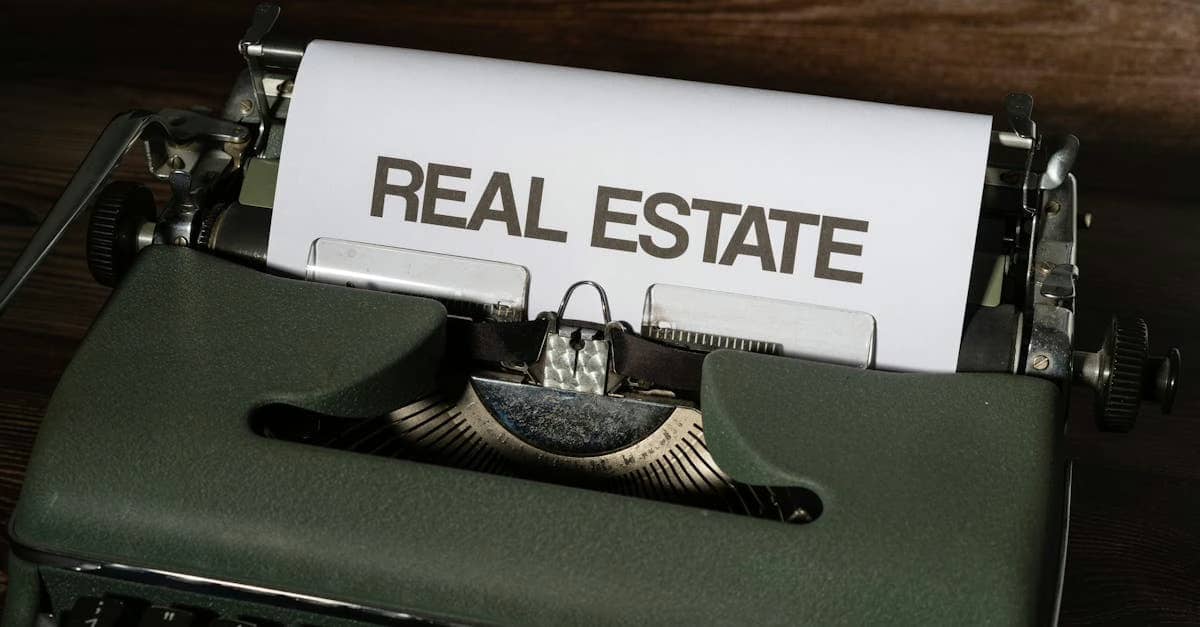Navigating Pre Foreclosure Auction Realities: A Broker’s Guide
Pre foreclosure auction properties represent a unique corner of the market, often presenting both significant opportunities and substantial risks. For real estate brokers and their teams, navigating the complexities of a pre foreclosure auction can be a major operational and compliance challenge. The condensed timelines, potential for title issues, strict auction rules, and the need for rapid, accurate due diligence place immense pressure on transaction coordinators and administrative staff. Ensuring every step adheres to state regulations and client expectations requires precision that traditional methods often struggle to provide, highlighting a key pain point in maintaining robust real estate broker compliance in high-stakes, fast-moving scenarios.
Understanding the Pre Foreclosure Auction Landscape
The journey to a pre foreclosure auction begins when a homeowner defaults on their mortgage. The lender initiates foreclosure proceedings, but before the property goes to public auction (often held on the courthouse steps), there’s a pre-foreclosure period. During this time, the homeowner might try to sell the property to pay off the debt, reinstate the loan, or negotiate a short sale. If none of these happen, the property proceeds to auction. For brokers representing buyers or sellers in this phase, understanding the nuances is critical. The process varies significantly by state, impacting everything from notice periods to redemption rights.
Due Diligence Challenges in Pre Foreclosure
Unlike traditional sales, due diligence in a pre foreclosure auction is severely restricted. Potential buyers often cannot perform detailed inspections inside the property. Information about the property’s condition, potential repairs, and occupancy status is limited. Brokers must advise clients on these risks. Verifying the exact amount owed on the mortgage, checking for additional liens (like tax liens, HOA liens, or mechanic’s liens), and understanding the priority of these liens are crucial steps. These tasks require diligent research, often under tight deadlines imposed by the lender or court schedule. Manual tracking of these details across multiple potential deals can quickly overwhelm administrative resources, underscoring the need for efficient transaction coordinator tools.
Title Issues and Risk Management
One of the most significant risks in buying a property at a pre foreclosure auction is the potential for title defects. While a foreclosure sale is intended to clear junior liens, errors can occur, and some liens (like certain tax liens) may survive the sale. Performing a thorough title search *before* bidding is paramount, but time constraints and access to information can make this challenging. Brokers must educate their clients that purchasing at auction often means buying the property “as is” and potentially with encumbrances that become the buyer’s responsibility. This necessitates robust risk disclosure and management protocols within the brokerage, which can be aided by smart real estate automation tools that flag potential issues.
Navigating Client Communication and Expectations
Representing clients interested in pre foreclosure auction properties requires clear, constant communication and careful management of expectations. Clients need to understand the risks involved, the accelerated timeline, the “cash only” nature of most auctions (or strict financing requirements), and the lack of contingencies. Brokers must explain that even winning a bid doesn’t guarantee a smooth closing; post-auction legal challenges can arise. Maintaining a documented communication trail is vital for real estate broker compliance. Tools like a smart CRM integrated with transaction workflows can ensure all client interactions, disclosures, and advice related to the risks of a pre foreclosure auction are logged and easily accessible.
Leveraging Technology for Pre Foreclosure Efficiency
Handling the complexities and speed of pre foreclosure auction transactions is where modern brokerage technology truly shines. Manual processes are prone to errors and delays that can be costly in this environment. Implementing solutions like AI transaction coordinators and virtual assistants for real estate can drastically improve efficiency and reduce risk.
How AI Streamlines Pre Foreclosure Workflows
An AI transaction coordinator can automate many of the repetitive, time-sensitive tasks involved in managing a potential pre foreclosure auction deal. This includes:
- Automated deadline tracking for auction dates, redemption periods, and notice requirements.
- Systematic checklist management for due diligence steps like verifying lien status and researching the foreclosure case.
- Automated generation of risk disclosure documents for clients.
- Organizing and storing vast amounts of property and case data securely.
- Facilitating communication by sending automated reminders to clients and team members.
By handling these operational burdens, the AI transaction coordinator frees up your human staff to focus on high-level tasks, like complex title research, client consultation on risk tolerance, and strategic bidding advice.
Virtual Assistants Supporting Pre Foreclosure Efforts
Supplementing your team with virtual assistants for real estate provides flexible capacity to handle the research-intensive aspects of pre foreclosure auction properties. A virtual assistant can assist with:
- Searching public records for lien information.
- Monitoring online auction calendars and property listings.
- Compiling property reports and neighbourhood data.
- Initial outreach to lenders or foreclosure attorneys for information (where permissible).
- Data entry into your CRM or `transaction coordinator tools`.
This blended approach, combining the automation power of AI with the flexible support of virtual assistants, creates a robust smart back office operation capable of handling the unique demands of the pre foreclosure auction market while ensuring crucial real estate broker compliance is maintained.
Actionable Tips for Brokers Handling Pre Foreclosures
Here are 3 key tips for brokers and their teams navigating pre foreclosure auction opportunities and challenges:
- Implement a Dedicated Pre-Foreclosure Workflow: Create a specific process checklist within your `transaction coordinator tools` that accounts for the unique timelines, due diligence limitations, and disclosure requirements of pre-foreclosure and auction properties. Ensure your `AI transaction coordinator` is configured to manage these specific steps and deadlines.
- Strengthen Client Education and Disclosure: Develop clear, concise materials (which your `virtual assistants for real estate` can help compile and disseminate) explaining the risks of buying at auction, including lack of access, potential liens, and occupancy issues. Use automated reminders to ensure clients acknowledge these risks in writing.
- Automate Due Diligence Tracking: Leverage `real estate automation` to track the status of lien searches, foreclosure case details, and title reports for each potential auction property. This reduces the chance of missing critical information due to the fast pace of the pre foreclosure auction environment.
Why Managing Pre Foreclosure Operations Matters
The operational and financial importance of efficiently managing pre foreclosure auction transactions for a brokerage cannot be overstated. Poor handling can lead to significant financial losses for clients and expose the brokerage to substantial liability due to missed deadlines, insufficient disclosure, or failure to identify title issues. Maintaining high standards of real estate broker compliance in this complex niche protects the brokerage’s reputation and financial health.
Furthermore, effectively navigating the pre foreclosure auction market can be a source of profitable deals and a differentiator for your brokerage. By leveraging advanced transaction coordinator tools like AI and virtual assistants, you can handle more of these complex transactions with greater accuracy and efficiency, allowing your agents to pursue opportunities in this market segment confidently. This contributes directly to `brokerage efficiency` and growth.
Key Points
Navigating a pre foreclosure auction requires precise process management, rigorous due diligence despite limitations, and clear client communication. Leveraging an AI transaction coordinator and `virtual assistants for real estate` can significantly enhance `brokerage efficiency` and ensure real estate broker compliance in this challenging market, mitigating risks and capitalizing on opportunities.
FAQs
Are pre foreclosure auction properties always a good deal?
Not necessarily. While they can offer below-market prices, they come with significant risks like unknown property condition and potential title issues. Careful due diligence is essential.
Can a buyer get a mortgage for an auction property?
Generally, no. Auctions typically require cash or hard money loans. Buyers must have funds readily available or secured before bidding.
What happens if someone is still living in the property after the auction?
Eviction is often necessary, which is the buyer’s responsibility and adds cost and time to the process.
How can a broker protect their client in a pre foreclosure auction?
Through rigorous due diligence, clear risk disclosure, ensuring clients understand the process, and using reliable `transaction coordinator tools` to track all steps.
What are the biggest risks for a broker in these transactions?
Failure to disclose risks adequately, missing critical deadlines, and errors in verifying title status or amounts owed, leading to compliance violations or lawsuits.
Resources
- Learn more about ReBillion.ai solutions: ReBillion.ai
- Explore our AI Transaction Coordinator services: ReBillion.ai AI Transaction Coordinators
- Discover Virtual Assistants for Real Estate Brokerages: ReBillion.ai Virtual Assistants
- Tools for Real Estate Agents: ReBillion.ai Tools for Agents
- Contact us for a consultation: Contact ReBillion.ai
Conclusion
The world of pre foreclosure auction properties is challenging but navigable with the right knowledge and tools. For brokers, mastering this niche means prioritizing meticulous due diligence, clear communication, and robust real estate broker compliance. The complexities of tracking timelines, verifying information, and managing risk highlight the operational burdens that traditional methods can’t easily bear.
This is precisely where innovative solutions come into play. By integrating `AI transaction coordinators` and `virtual assistants for real estate` into your operations, your brokerage can handle the unique demands of the pre foreclosure auction process with greater accuracy, efficiency, and confidence, turning potential pain points into opportunities for growth and enhanced `brokerage efficiency`. Equip your team with the `transaction coordinator tools` they need to succeed in every market segment.
ReBillion.ai helps real estate brokers streamline operations with AI-powered transaction coordination, virtual assistants, and intelligent back-office automation. Whether you’re scaling your team or closing more deals, ReBillion.ai is built to simplify your brokerage’s compliance, efficiency, and growth. Visit ReBillion.ai to explore solutions or schedule a consultation.


